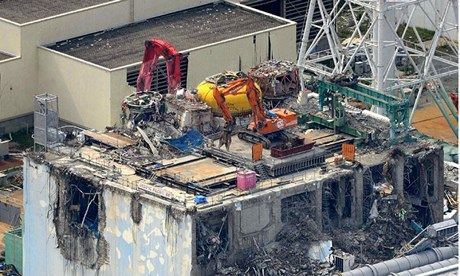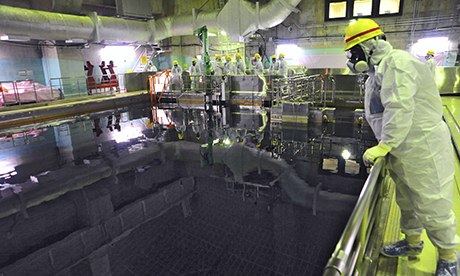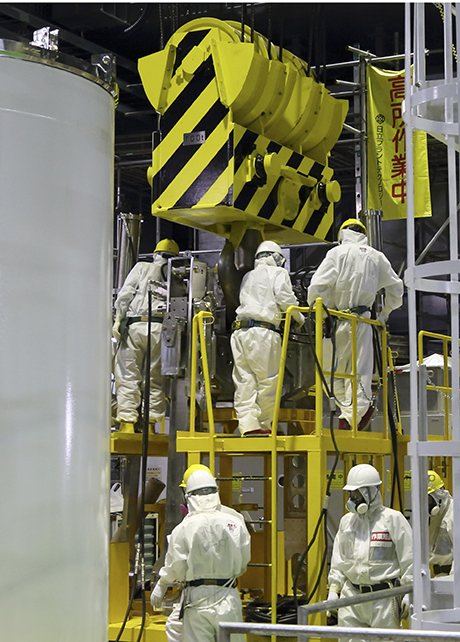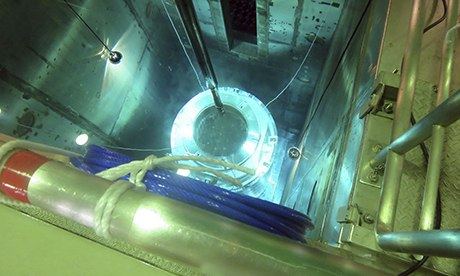"With the sheer number of things that are going wrong, they should be more openly bringing in help," says
Ken Buesseler, a senior scientist at Woods Hole Oceanographic Institute in Massachusetts, who has analysed seawater for radiation directly offshore from Fukushima. "Tepco is a
nuclear power producer, not a cleanup operation. There are people with expertise in decommissioning reactors, and they need to be brought in whether they are Japanese, European or American. Every time they have a problem, they come up with a solution that takes a long time to bring in, and then doesn't even solve the problem. "
Tepco does have international advisers. In the wake of criticisms over its handling of the crisis, the company set up an independent Nuclear Reform Monitoring Committee. The committee is led by Dale Klein, former chairman of the US Nuclear Regulatory Commission (NRC). His deputy is Lady Barbara Judge, former head of the UK Atomic
Energy Authority. They do not underestimate the long job ahead: this is make or break time for Tepco.
Who should the public trust? In nuclear issues it can be hard to know. The engineers with most experience, those best placed to make a dangerous site safe, are industry insiders. Nuclear is their livelihood. But who does not have biases? Are anti-nuclear activists better qualified, more honest? Are academics more independent? University staff who work on nuclear technology are often funded by, or have close links to the industry. Perceived biases can be just as harmful to trust as real ones.
John Large, a UK-based nuclear consultant, says Tepco needs more outside help to decommission the plant. He wants the International Atomic Energy Agency (IAEA) to arrange for a team of engineers with hands-on experience to assess the site, and come up with a fresh plan of action. But he concedes there are problems with the idea. Industry engineers will defend the industry, he says. "They need to be told: 'Forget the fact that you design these reactors, right now we need your expertise.'"
Tepco has planned heavily to reduce the danger of another high-profile mishap while it removes fuel from the storage pool at unit four. Engineers have beefed up the cranes that will move the fuel. If a fuel assembly jams in its rack, the crane should stop pulling immediately, to reduce the risk of breakage. A second crane that lifts the cask is designed to hold its load even if power is lost. All these will help. A dropped nuclear fuel assembly will not go critical, but more radiation might escape. That may not be dangerous beyond the site, but it could be the final straw for Tepco's reputation.
Workers on a crane for a huge container that will transport fuel rods. Photograph: Tomohiro Ohsumi/AP
"We haven't had a problem of this magnitude before in decommissioning," says Lady Judge. "When you're dealing with decommissioning a reactor where there's been an accident you have to respond to difficulties. When you're dealing with decommissioning a reactor that's reached the end of its productive life, you are being proactive and you can do it in a much more slow and methodical manner."
Good news is hard to find around Fukushima. In the earliest days of the crisis, a plume of radioactive material blew northwest from the site and settled as a teardrop scar reaching more than 30km across the land. From the coastline, through the towns of Okuma, Futaba and Namie, are huge patches of ground where the additional annual dose of radiation is more than 50 millisieverts. Natural background radiation, from cosmic rays and sources in the air and rock, reaches 2 to 3 millisieverts per year.
A preliminary IAEA report in October on efforts to clean up the contaminated land was full of praise for the remediation work so far, and made a handful of gentle suggestions for improvement. Yet the work is far behind schedule in seven of 11 selected towns and villages; the deadline of March 2014 is now unachievable. This month, officials in
Japan admitted for the first time that thousands of evacuees from the worst affected areas may never return home. The governing Liberal Democratic party says a more realistic approach is needed: it wants compensation for the 160,000 people displaced by the radioactive leak, so they can rebuild their lives elsewhere.
Up on the cliff overlooking the Fukushima plant is a bleak reminder of an ongoing battle at the site. This strip of land was once filled with trees, a place for workers to go walking. Tepco has cut the trees down now, to make room for 1,000 huge metal storage tanks. They hold more than 360,000 tonnes of radioactive water, enough to fill 140 Olympic swimming pools. The volume rises every day. Over the next three years, Tepco wants to add storage for another 270,000 tonnes of radioactive wastewater. Ultimately, the water must be returned to the Pacific. There is nowhere else for it to go.
The steady accumulation of contaminated water is in part down to geology. The three reactors that were running when the tsunami struck are kept cool by flushing them with 400 tonnes of water each day. The process leaves the cooling water laced with radioactive contamination. But Fukushima sits at the bottom of a hill, on land with a high water table. Hundreds of tonnes of water drain down the hill every day, quietly beneath the surface. When this subterranean flow reaches the power plant, it enters the cracked reactor buildings and mixes with the contaminated cooling water. Much is pumped out and passed through a filter made with zeolite clay, which removes dangerous caesium isotopes. But the other radioactive substances remain. This water, around 300 tonnes a day, is pumped into the storage tanks up on the hill.
Some scientists questioned from the start Tepco's decision to store contaminated water. Another earthquake could rupture the tanks and see another major radioactive release from the site, they feared. So far, Tepco has been spared that particular disaster, but the concerns are still justified. Smaller accidents have been rife. In August, workers discovered that 300 tonnes of radioactive water had leaked from one of the tanks. The radiation emanating from the puddle left on the ground was enough to give a bystander the industry's five-year maximum permissible dose in just one hour. In October, half a tonne of contaminated water spilled on to the ground and may have drained to the sea, when tanks overflowed with rainwater.
"It's clearly something they need to get a handle on," Allison Macfarlane, chair of the US Nuclear Regulatory Commission, told the Guardian. "Water is a big issue for them, but they've also got to keep the reactor cores cool, and they've got to clean it up."
Tepco has taken on a US consultant,
Lake Barrett, who led the NRC's cleanup of Three Mile Island, the worst commercial nuclear power accident in the nation's history. "It's certainly confidence-shaking to hear about spills and inadvertent releases from the plant. Even though the radioactivity levels are quite small, the public certainly don't have trust and confidence in Tepco's ability to do the more important things like the defuelling, and that is a problem for them," he says.
Link to video: Fukushima nuclear rods' removal begins
In
a November report, Tepco said it had set up 15 specialised teams to replace old bolt-fastened tanks with welded ones, install water level gauges, and up the number of patrols that inspect the tanks for leaks. While two thirds of the storage tanks are welded steel vessels, more than 300 are makeshift, added in haste to increase capacity at the site. They are made from steel sheets that are bolted together and sealed with plastic packing.
Water stored in the tanks is contaminated with a host of radioactive substances. One of the most troubling is strontium-90, which mimics calcium when it gets into the body. The substance concentrates in bones, so even low levels in the environment can build up over time and become harmful. When released into the ocean, strontium works its way into fish bones, which can make catches unfit for consumption. The hazard will last a long time: strontium's radioactivity takes 30 years to fall by half.
Tepco is trying to decontaminate the water with an "advanced liquid processing system" (Alps). In principle, the technology can strip all radioactive substances from the water, except tritium, one of the less dangerous radioactive substances, which was spread widely through the environment by nuclear bomb tests in the 1950s and 1960s. Tepco claims the system will ultimately decontaminate more than 500 tonnes of water a day. But that may be optimistic. The equipment has suffered multiple failures. In the latest setback on Sunday, an ALPS unit was shut down when a pipe began to leak acid. Workers wrapped a vinyl bag around the joint to stem the flow while Tepco investigates.
A nuclear fuel rod being lifted from a pool in reactor four. Photograph: TEPCO / HANDOUT/EPA









